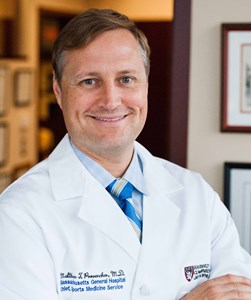Biceps Tendon Injury Specialist

Are you an athlete who participates in sports that involve heavy overhead lifting? If so, you may be at risk of injuring or tearing your biceps tendon. A biceps tear can occur from repetitive overuse, a fall, heavy lifting or degeneration of the tendon over time. Biceps tendon injury specialist, Dr. Matthew Provencher provides diagnosis and both surgical and nonsurgical treatment options for patients in Vail who have suffered a biceps tendon injury. Contact Dr. Provencher’s team today!
What is the Biceps Tendon?
Located at the front of the arm, the biceps muscle is responsible for rotating the wrist and flexing the elbow. The muscle has two tendons that attach it to the shoulder bones, as well as one tendon that attaches it to the elbow bone. The tendons are quite tough but are susceptible tearing. A torn biceps is a common shoulder injury seen by shoulder specialist Dr. Matthew Provencher, serving patients from Vail, Aspen, Colorado Springs and Denver, Colorado. Typically caused by a sports injury, fall, or extreme overuse; a biceps tendon tear will cause pain, bruising, and a noticeable deformity of the biceps muscle.
Two tendons are responsible for attaching the biceps muscle to the shoulder. The “long head” tendon attaches the muscle to the top of the shoulder socket and the “short head” attaches to the shoulder blade. A biceps tendon injury is more likely to occur in the long head tendon. The short head tendon may allow patients to continue using the biceps muscle even in cases of a complete tear of the long head tendon.
What is a Torn Biceps?
A torn biceps can occur at the shoulder joint or the elbow joint.
- Shoulder joint- Commonly seen in adults over the age of 60 years or in association with a rotator cuff injury, a proximal biceps tendon tear is an injury to the tendon where it enters the shoulder.
- Elbow joint- Commonly seen in middle-aged men heavily involved in sports and weight lifting, a distal biceps tendon tear is an injury to the tendon where it enters the elbow.
A damaged biceps tendon can become frayed and eventually tear at its attachment site. A torn biceps is classified as either partial or complete. A partial tear does not completely sever the tendon, while a complete tear disrupts the tendon away from the bone.
What are Symptoms of a Biceps Tendon Injury?
The hallmark sign of a biceps tendon injury is sudden and severe pain in either the shoulder or elbow area. Patients may also experience tenderness, bruising, cramping, a snap, or a “popping” sensation. Many patients may also notice a visible deformity in the injured area, often known as a “popeye” muscle deformity, as well as difficulties rotating the arm from a palm down to a palm up position.
How is a biceps tendon injury diagnosed?
If Dr. Provencher believes a torn biceps is present, he will order an MRI scan and perform a thorough physical examination.

Does a Biceps Tendon Injury Require Surgery?
Dr. Provencher typically recommends non-surgical measures such as ice, rest and anti-inflammatory medications (NSAIDs) for minor or partial biceps tendon injuries. Patients will also begin a physical therapy program to increase flexibility and strength. It is strongly suggested that patients work with the in-house physical therapists to optimize their rehabilitation. While the torn biceps heals, patients are encouraged to refrain from heavy lifting.
What is Bicep Tendon Surgery?
If the torn biceps is severe or does not respond to non-surgical treatment, Dr. Provencher may recommend surgery. Tears of the tendon at the elbow almost always require surgical intervention.
A biceps tendon injury located at the shoulder can be repaired arthroscopically in many cases. Dr. Provencher will create tiny incisions and re-anchor the torn biceps tendon to the bone. A simple debridement (shaving) procedure may be performed if only a small portion of the tendon sustained damage. A biceps tenodesis may be necessary if a large portion of the tendon is damaged. This procedure requires Dr. Provencher to remove the torn tendon stump from inside the joint and then reattach the remaining tendon to the upper arm bone (humerus).
For additional resources on a biceps tendon injury, such as a torn biceps, please contact Dr. Matthew Provencher’s orthopedic office, specializing in shoulder and biceps injuries, and serving the Vail, Aspen, Colorado Springs and Denver, Colorado communities.